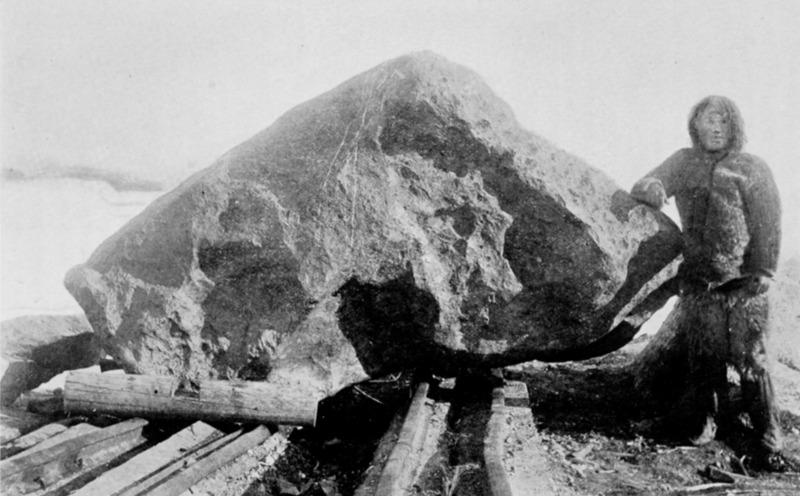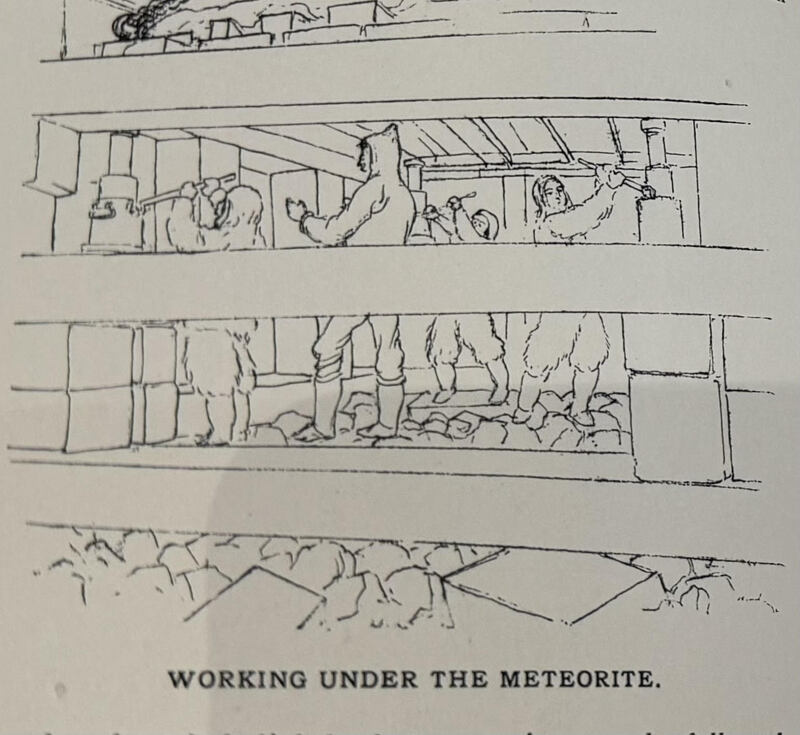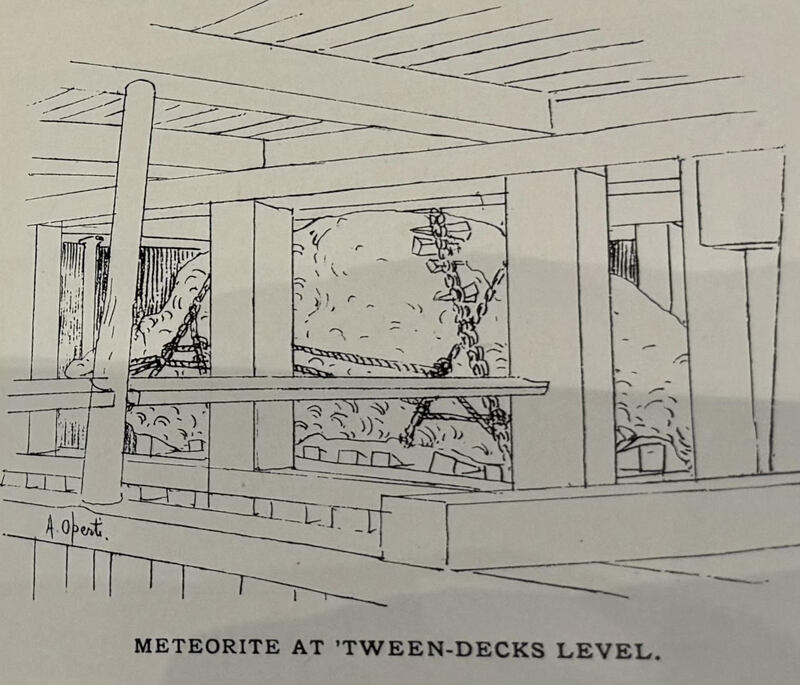Admiral Peary's Official Account - Retrieving Greenland's "Heavenly Visitor"
As previously mentioned, the primary objective of this expedition for Admiral Peary was to extract the last and largest of the Cape York Meteorites. This trip north was just one in a series of journeys to Greenland aimed at working on the meteorites which Peary claimed to have discovered in 1894 (in reality the Inuit in the area had known about and used the meteorite for its iron for years before). Northward Over the Great Ice focuses entirely on this primary objective and makes little mention of the additional purposes Peary's journey served. Since this book was published for the public at large, we are given a much more polished and glorified depiction of life in the arctic and the tasks and roadblacks the crew had to face.
The Main Expedition
Peary describes his journey starting in July of 1896 as a determined and heroic push to collect the giant meteorite that he had failed to bring home previously. Although these previous expeditions were not fully successful, Peary portrays them in a positive light, emphasizing the learning and gradual progress over the course of the many journeys. He holds back from expressing the frustrations or feelings of annoyance that surely were felt during his journeys in 1895 and 1894. The process of getting to Greenland and traveling over ice to the meteorites are glazed over very rapidly, making them seem as though they were simple processes. We know this is false because some of his expeditions had failed to even reach the meteorites.
Before any detailed description of the actual journey, Peary focuses heavily on the processes used to excavate, extract and transport the meteorite, which he has a clear fascination and admiration for. He describes how he and his crew worked tirelessly night and day to slowly but surely remove the large meteorite (named “Ahnighito”). The description of the process is highly poetic and embellished, for example as he explains “The first thing to be done was to tear the heavenly visitor from its frozen bed of centuries, and it rose slowly inch by inch under the resistless lift of the hydraulic jacks”
In describing the weather conditions and the slow shift to winter that began to occur while they were in Greenland, Peary paints a calm and peaceful characterization of the scenery, despite the cold and shifting icebergs surely being a source of discomfort and frustration. In the midst of what he said was the worst storm they experienced on the journey, he describes how “working around the meteorite was my own little party”. He briefly touches on how the conditions did not enable him and his crew to bring back the meteorite on that journey in 1896, and quickly moves on to the following year when he returned, where he was “disappointed but never discouraged”. Peary goes into excruciating detail regarding every bit of engineering and construction they carried out to be able to bring home the meteorite, which gives fascinating insight into the work and thinking that had to go into the project. The level of precision that went into the operation is truly impressive. Every challenge related to this and the navigation of the ship through the ice is presented as being immediately considered and overcome, which paints a heroic picture of the voyage.
Peary describes how during their journey back home, they faced “hellish” Arctic storms that made the superstitious crew members worry for their lives. However, he portrays himself as a figure of steadfast confidence and certainty, indicating to the reader that these difficulties were at all times manageable.
Characterization of the Meteorite
A key point to note from Northward Over the Great Ice is the majestic characterization of the meteorite, no doubt serving the purpose of convincing the audience of the importance of the many journeys Peary embarked upon. This can be tied not only to a desire for personal glory, but also the importance of raising funds for future expeditions. Throughout the book, the meteorite is referred to with a range of names including the “heavenly stone” and “celestial prisoner” of Cape York. In awe inspiring fashion, Peary describes how the “Iron Mountain” towered above him and his crew when they stood it up. This combined with references to the spiritual significance of the object to the native communities, who viewed the meteorites as divine gifts, truly helps portray a sense of wonder and importance.
Description of Indigenous Peoples
Another notable aspect of Peary’s book are his interactions with indigenous people of Greenland and his descriptions of them. We learn from Peary’s account that he recruited local Inuit people to be workers helping him uncover and extract the meteorite. He often describes the group as his “faithful eskimos” and is generally complimentary of their work and contributions, however he never mentions any of them by name. In describing their work, Peary writes “They assisted in every possible way, and never interposed the slightest objection to my removal of their heavenly guest, – in fact, seemed almost as disappointed as I when the insweeping ice compelled me to give up my prize till another time”. On one hand, this seems to show a level of compassion and appreciation for the natives he was working with, however, other accounts of the expedition suggest the relationship between Peary and the natives was not as benevolent as he would have us believe. Hints of this come out of the book when he refers to the group of native workers as “my Eskimos”. Furthermore, the notion that the natives were not bothered by his removal of the meteorites is likely false, as they were an important resource for local tribes.
What is not reported in Peary’s book is that during his expedition, he deceived six indigenous people into traveling back to the US with him by promising them tools and gifts. In reality, they served as extra labor and were never given these gifts, with four of the six dying of illness soon after reaching the US. We therefore can identify that the descriptions of indigenous people in the book are likely inaccurate and reconstructed in a way that portrays a kind and fruitful partnership.




